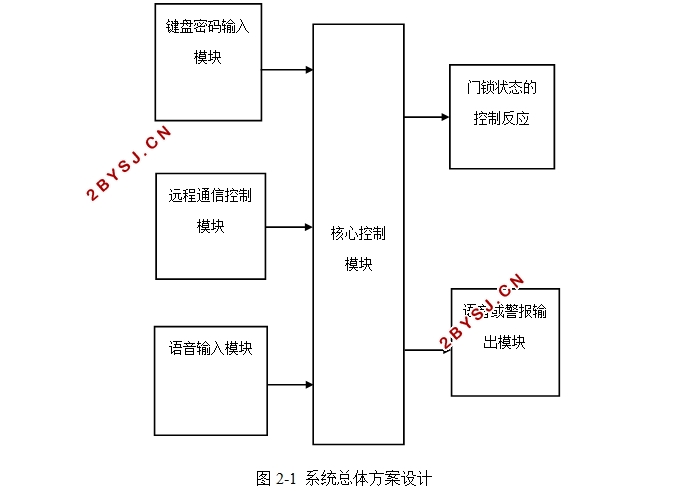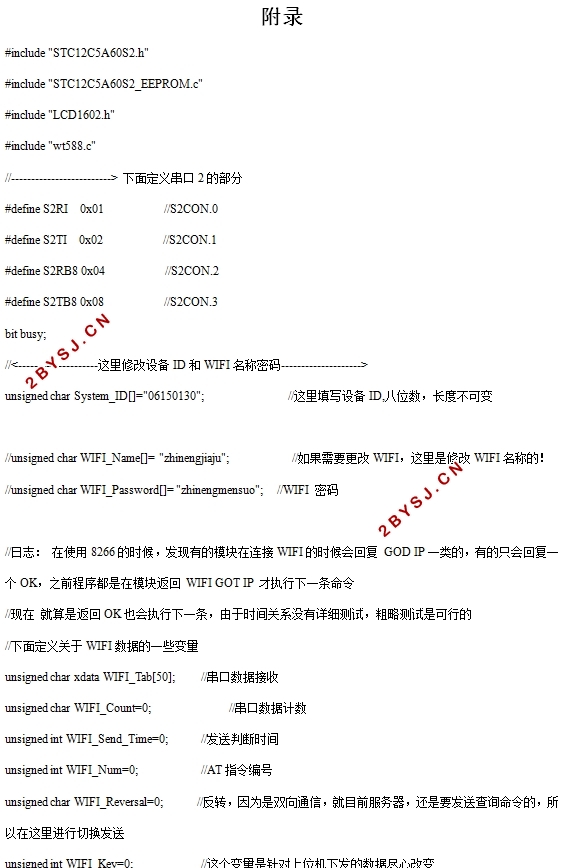智能家居门锁系统的设计
无需注册登录,支付后按照提示操作即可获取该资料.
智能家居门锁系统的设计(任务书,开题报告,论文17000字)
摘要
智能家居系统目前已经流行开来,智能家居系统主要是利用网络进行综合管理和控制家居,为人们创造更好的生活环境享受优质生活。本次设计完成了一个智能家居门锁系统的设计和实现,使用该系统人们可以键盘输入密码开锁还可以语音输入密码开锁甚至还可以通过WIFI进行远程开锁,并且当密码输入错误的时候还能语音播报提醒,给人们提供更智能安全的家居门锁系统。
本论文首先介绍了智能家居系统的选题背景以及选择智能家具门锁系统的意义,然后开始介绍智能家居系统的发展现状和存在的问题,再然后对系统进行总体的方案设计,将系统的功能和模块确定下来;接着主要介绍了核心控制模块、键盘输入模块、语音输入输出模块、远程控制模块这四个模块详细功能和原理;之后着手系统的编码和程序的运行;最后对本次毕业设计进行总结和对未来的展望。
关键词:智能家居 单片机 WIFI 语音识别
Design and implementation of Smart Home door Lock system
Abstract
Smart home system has become popular at present, smart home system is mainly to use the network for integrated management and control of home, for people to create a better living environment to enjoy quality life. This design completes the design and implementation of a smart home door lock system, which can be used to unlock the keyboard input password, the voice input password, and even the remote unlock through WIFI. And when the password input error, but also voice broadcast reminder, to provide people with a more intelligent and secure home door lock system.
This paper first elaborate the background of smart door lock system and the meaning of selecting smart door lock system. Then begins to elaborate the development trend of smart home system. And then tell the overall scheme design to the system. Select the suitable system and system programme. Then it introduces the systems’ detailed functions and its principles of the core control module, keyboard input module, voice input and output module and remote control module, and then proceeds to the coding of the system and the operation of the program. Finally, the graduation project summarizes the prospect of the future.
Key words: smart home Microcontrollers WIFI Voice recognition


目录
第一章 绪论 1
1.1 选题背景、意义 1
1.2 发展现状 1
1.3 存在的问题 3
1.4 课题任务 3
第二章 系统方案设计 4
2.1 系统总体方案设计 4
2.2 系统方案的选择 5
第三章 系统硬件设计 6
3.1 核心控制模块 6
3.2 密码键盘输入和显示模块 10
3.3 语音输出和输入模块 12
3.4 手机远程控制模块 15
第四章 系统软件设计 18
4.1总体软件流程图设计 18
4.2 矩阵键盘输入 19
4.3 语音输入模块 20
4.4 手机输入密码模块 21
第五章 测试与结果 23
第六章 总结与展望 27
参考文献 28
附录 31
